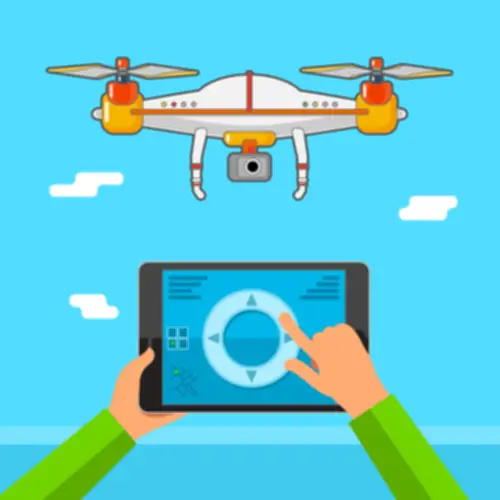This approach melds the security of personal clouds with the scalability of public clouds, offering an optimized computing setting that meets each operational flexibility and cost-effectiveness needs. Today’s integration groups want access to a combine of instruments that permit them to steadiness conventional and trendy integration styles. When evaluating hybrid integration platforms, listed right here are crucial capabilities you must look to gauge hybrid integration solutions.
How Gbk Achieved A 50% Surge In Integration Effectivity And Security With Torry Harris
If you realize that you have to join legacy functions and APIs, you want to look for a more strategic iPaaS. Most of the integration platforms that also come with hybrid capabilities are also thought-about to be Enterprise Integration Platform as a Service (EiPaaS). Integration platforms (iPaaS) and hybrid integration platforms (HIP) have started to turn into extremely well-liked during the previous few years to accelerate the execution of the combination methods of enterprises. Far too often, nonetheless, organizations move headlong into their digital transformation efforts with out stopping to properly put together their techniques and processes for the transition. In 2018, Gartner predicted, “Through 2020, integration work will account for 50% of the time and price of building a digital platform”.

You Can’t Avoid Hybrid Integrations
Our platform uses the VPN Agent to communicate knowledge to and out of your local data supply safely and securely. Fiorano offers strong securitymeasures, together with knowledge encryption, entry control, authentication,and authorization mechanisms. Wealso assist governance insurance policies,auditing, and compliance requirements to make sure data privateness andregulatory compliance.
What’s A Hybrid Integration Platform?

Each node canindependently course of integration duties, making the platform extremely scalable and capable of handlinglarge-scale integration situations. The distributed peer-to-peer structure enhances fault tolerance,permits load balancing, and optimizes useful resource utilization, guaranteeing environment friendly integration operations. Personalized buyer experiences, fast and secure data switch throughout on-premises and a quantity of clouds, fast reaction to market adjustments — these are simply a few of the advantages the IBM platform provides. This may be each the combination of functions inside a company and outdoors reference to partners and distributors. An HIP configures, regulates and manages data sharing between workers, companions and customers, which allows for better communication, improves productiveness and the level of satisfaction.
When the corporate should broaden or modify its expertise infrastructure to help a brand new business opportunity, it must invest important time and resources to render the change. Hybrid integration platforms and integration strategies support coexistence of all methods, enabling the agility and resilience central to the well being of the business. In the context of a HIP, API management typically leans towards a more flexible strategy, accommodating both legacy methods and newer cloud-based applications. This implies that businesses can manage APIs which are hosted on-premises and within the cloud in a cohesive integration technique. Hybrid cloud integration is a strategy to bridge the hole between the prevailing on-premises techniques similar to databases, legacy functions and warehouses, and SaaS applied sciences in addition to multicloud environments.
We’re Constructing A Related Ecosystem Of The Top Saas And Service Companies
Given its innate scalability, hybrid integration accelerates progress, which in turn increases revenue. Enterprises may choose between cloud and on-premises storage fashions to help management costs. For instance, contemplate a web-based trend retailer that uses varied applications and providers to glean shopper insights, handle inventory, and observe buy conduct. By integrating these platforms using a HIP, they can streamline buyer interactions and ship personalized suggestions to consumers. This not only enriches the shopper expertise but additionally fosters model loyalty and boosts revenues. From established on-premises systems to newly adopted software-as-a-service (SaaS) purposes, integration is a crucial, yet more and more sophisticated, step toward digital enterprise transformation.
A hybrid integration platform (HIP) is an integration platform that enables organizations to connect and combine their on-premises systems and functions with cloud-based methods and applications. It is a mixture of both conventional integration applied sciences and cloud-native integration applied sciences that can be deployed on-premises, in the cloud, or in a hybrid setting. Within a combined setting, hybrid integration platforms make it simpler for the enterprise to maintain control.

DCKAP Integrator is an integration resolution built specifically keeping distributors in mind. Its comprehensive integration options and specialised connectors for leading distributor-preferred eCommerce, ERP, and CRM platforms make it a wonderful selection for good distributors. This iPaaS Platform offers many options together with limitless integration, advanced mapping and modifiers, secure knowledge move, superior logs and extra. Unlike Software as a Service (SaaS), which is delivered over the internet, an iPaaS is a cloud-based integration resolution.
- IPaaS is broader, ETL is data-centric, and ESB is focused on application-level integration.
- Traditionally, integration platforms were constructed by connecting key capabilities throughout a company.
- HIPs present a set of tools and providers for connecting and integrating totally different systems, functions, and data sources, whether they are on-premises or within the cloud.
- This is the one solution on the market that offers enterprises a true end-to-end “API factory” for creating digital companies, making it a singular benefit you won’t discover wherever else.
- Even should you don’t have an integration technique and also you haven’t planned as far alongside as five years any longer, you must select an iPaaS that’s agile and might help the combination wants of your different business models.
Complete integration platforms combine all of the capabilities you need right into a unified, containerized platform. They also can make it simpler to bridge the gap between a number of types of integration. It’s designed to meet the unique needs of its users, and it brings various kinds of integrations together in a single place.
While these techniques may go just fantastic department by division, the legacy infrastructure would not adapt nicely to at present’s business need of exchanging data in actual time. Do you keep in mind the “good old days” of IT, when an entire enterprise could run on a single LAN, with all their business-critical applications and infrastructure hosted in a closet down the hall? Now, the lots of of systems, data sources, and platforms most organizations rely on are dispersed all through the world.
A hybrid integration platform is a device that helps firms modernize in place or transition from older on-premises know-how to modern cloud-based solutions. It’s designed to assist companies all through their journey, guaranteeing the change happens smoothly and without making a negative impact on enterprise operations. Anyone wanting to move from on-premise techniques to cloud-based options or utilize both environments is going to should first leverage hybrid integration platforms and bridge the two. You might want to make the most of a hybrid integration platform for legacy system modernization. While in plenty of instances, altering outdated methods just isn’t an choice, using a hybrid integration approach might help you drive innovations. An integration layer will add to the lifecycle of your old investments in order that you’ll have the ability to connect these applied sciences to others as well to speak with other systems and functions.
HIPs streamline business processes and make the enterprise’s entire organization more environment friendly by automating connections and rising scalability. That means enterprises are better able to reply to challenges associated to the platform mannequin, with their very own progressive solutions. In a hybrid IT surroundings, data often resides in multiple locations—on-premises, within the cloud, or across various third-party applications. To get a comprehensive view of your business, you want to consolidate and analyze this data in real-time. A Hybrid Integration Platform lets you pull information from a number of sources, integrate it, and deliver it to your Business Intelligence (BI) tools for evaluation. Data integration lies at the heart of most enterprise operations, and your HIP might be responsible for synchronizing data between methods.
However, an iPaaS could not require customized API integrations, which can scale back the whole investment. An iPaaS solution can solely perform system-to-system integrations with internet and cloud-based sources, which restricts the platform’s flexibility. As such, the organizations that opt for an iPaaS answer must put money into an extra platform to carry out information transformation tasks on-premises.

Comentarios recientes